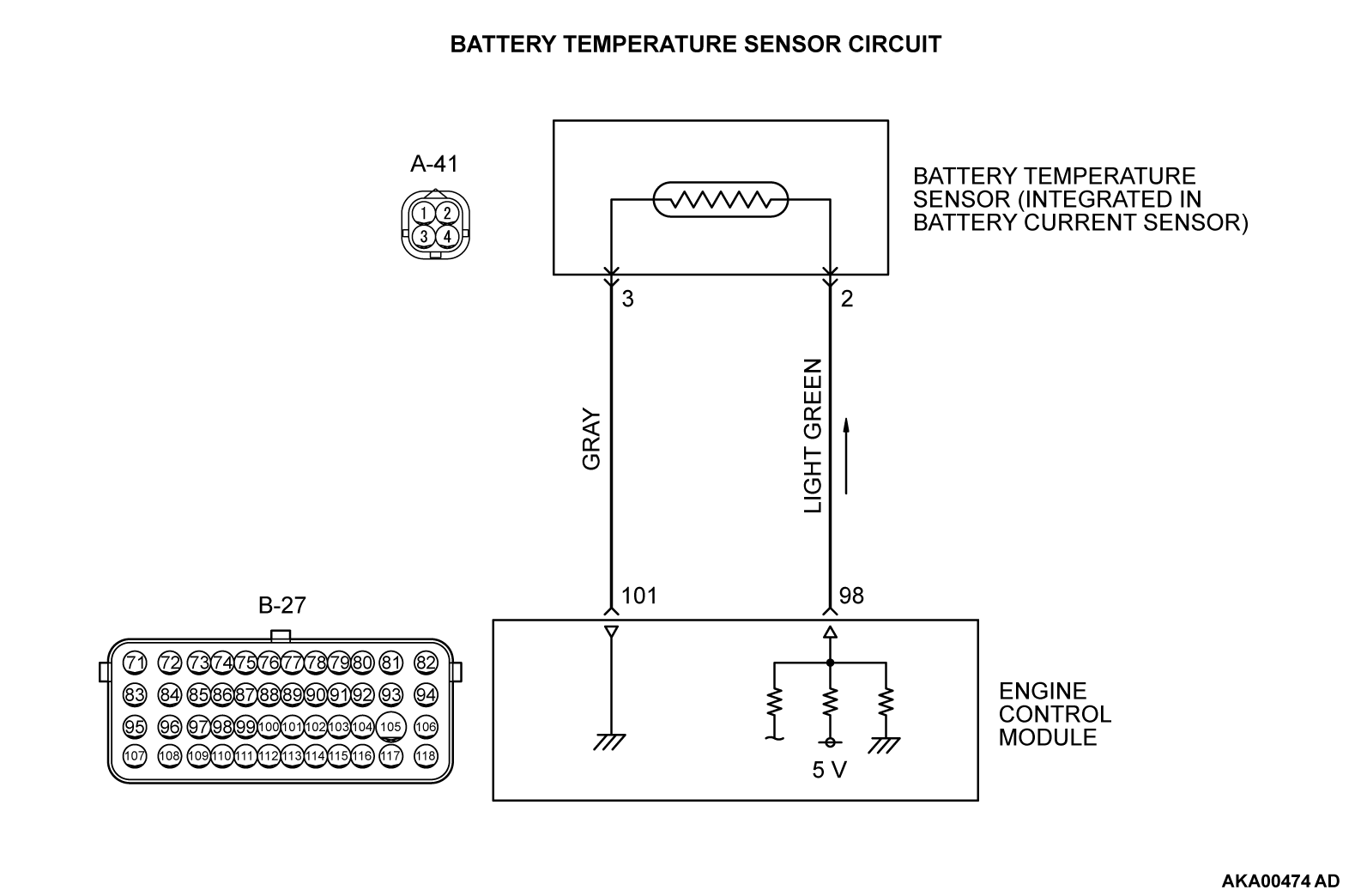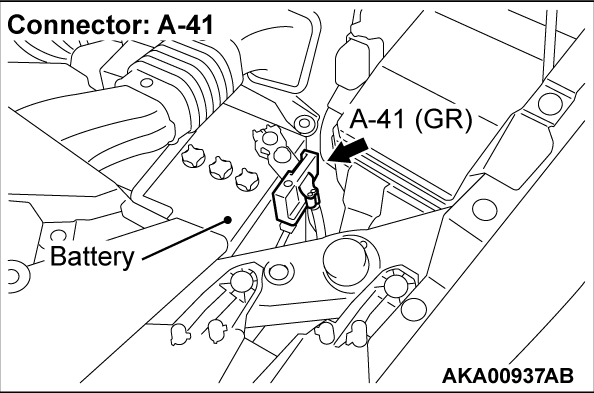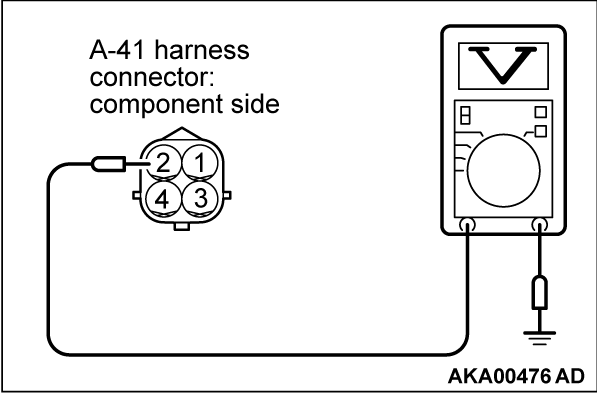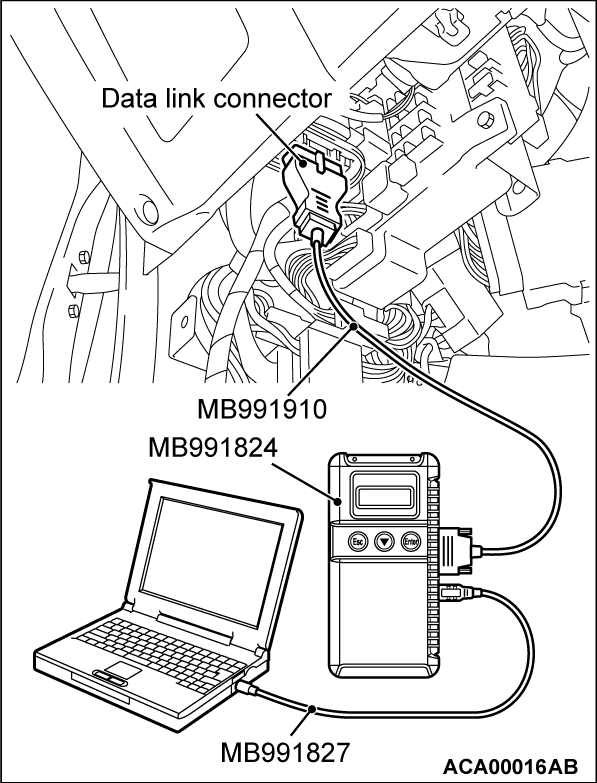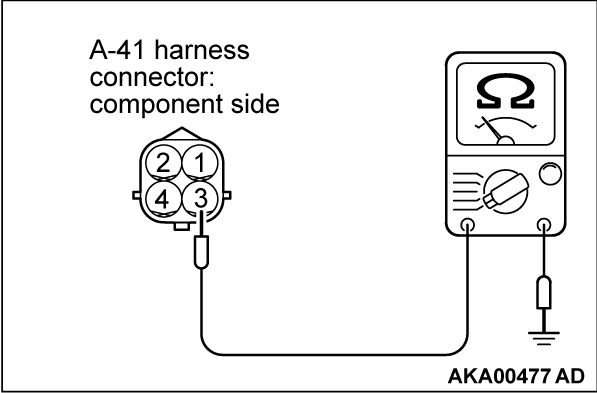DTC P0515: Battery Temperature Sensor Circuit
CIRCUIT OPERATION
- Approximately 5 volts are applied to the battery temperature sensor output terminal (terminal No. 2) from the ECM (terminal No. 98) via the resistor in the ECM. The ground terminal (terminal No. 3) is grounded with ECM (terminal No. 101).
- The battery temperature sensor is a negative temperature coefficient type of resistor. When the battery temperature rises, the resistance decreases.
- The battery temperature sensor output voltage increases when the resistance increases and decreases when the resistance decreases.
TECHNICAL DESCRIPTION
- The battery temperature sensor converts the battery temperature to a voltage.
- The ECM checks whether this voltage is within a specified range.
DESCRIPTIONS OF MONITOR METHODS
Battery temperature sensor output voltage is out of specified range.
DTC SET CONDITIONS
Check Condition
- 2 seconds later after the ignition switch has been in ON position or just after the engine has started up.
Judgment Criterion
- Battery temperature sensor output voltage is more than 4.6 V (corresponding to a battery temperature of -50°C or less) for 2 seconds.
or
- Battery temperature sensor output voltage is less than 0.2 V (corresponding to a battery temperature of 90°C or more) for 2 seconds.
FAIL-SAFE AND BACKUP FUNCTION
- Prohibits generator output suppression control against current consumers. (Operates as a normal generator.)
TROUBLESHOOTING HINTS (The most likely causes for this code to be set are:)
- Battery temperature sensor failed.
- Open/shorted battery temperature sensor circuit, harness damage or connector damage.
- ECM failed.
DIAGNOSIS
Required Special Tools:
- MB991958: Scan Tool (M.U.T.-III Sub Assembly)
- MB991824: V.C.I.
- MB991827: USB Cable
- MB991910: Main Harness A
- MB992110: Power Plant ECU Check Harness
STEP 1. Check harness connector A-41 at battery temperature sensor for damage.
Is the harness connector in good condition?
STEP 2. Check the battery temperature sensor.
Is the check result normal?
STEP 3. Measure the sensor supply voltage at battery temperature sensor harness side connector A-41.
(1) Disconnect the connector A-41 and measure at the harness side.
(2) Turn the ignition switch to the "ON" position.
(3) Measure the voltage between terminal No. 2 and ground.
- Voltage should be between 4.5 and 4.9 volts.
(4) Turn the ignition switch to the "LOCK" (OFF) position.
Is the measured voltage between 4.5 and 4.9 volts?
STEP 4. Check harness connector B-27 at ECM for damage.
Is the harness connector in good condition?
STEP 5. Check for open circuit and short circuit to ground between battery temperature sensor connector A-41 (terminal No. 2) and ECM connector B-27 (terminal No. 98).
STEP 6. Using scan tool MB991958, read the diagnostic trouble code (DTC).
| caution | To prevent damage to scan tool MB991958, always turn the ignition switch to the "LOCK" (OFF) position before connecting or disconnecting scan tool MB991958. |
(1) Connect scan tool MB991958 to the data link connector.
(2) Start the engine and run at idle.
(3) After the DTC has been deleted, read the DTC again.
(4) Turn the ignition switch to the "LOCK" (OFF) position.
Is DTC P0515 set?
STEP 7. Check the continuity at battery temperature sensor harness side connector A-41.
(1) Disconnect the connector A-41 and measure at the harness side.
(2) Check for the continuity between terminal No. 3 and ground.
- Continuity (2 ohms or less)
Does continuity exist?
STEP 8. Check harness connector B-27 at ECM for damage.
Is the harness connector in good condition?
STEP 9. Check for open circuit and damage between battery temperature sensor connector A-41 (terminal No. 3) and ECM connector B-27 (terminal No. 101).
STEP 10. Check harness connector B-27 at ECM for damage.
Is the harness connector in good condition?
STEP 11. Check for harness damage between battery temperature sensor connector A-41 (terminal No. 2) and ECM connector B-27 (terminal No. 98).
STEP 12. Using scan tool MB991958, read the diagnostic trouble code (DTC).
(1) Connect scan tool MB991958 to the data link connector.
(2) Start the engine and run at idle.
(3) After the DTC has been deleted, read the DTC again.
(4) Turn the ignition switch to the "LOCK" (OFF) position.
Is DTC P0515 set?
 Retry the troubleshooting.
Retry the troubleshooting. The inspection is complete.
The inspection is complete.![[Previous]](../../../buttons/fprev.png)
![[Next]](../../../buttons/fnext.png)
